Osteoglossomorpha
Most species in this group lack the right ovary and demonstrate parental care. The name "Osteoglosso-" means "bony tongue" and comes from the presence of tongue bones in the majority of fish species.
Hiodontiformes: Mooneyes
There is only one family (Hiodontidae) and one genus (Hiodon). They are the only members of Osteoglossomorpha found in North America (in the wild of course). They are named because their eyes give off a metallic shine.
Osteoglossiformes: Bonytongues
These fishes maintain an interesting digestive characteristic: the intestines pass to the left of the stomach, whereas in all other fish, it passes to the right. They also have bony tongues, containing teeth which connect with teeth on the roof of the mouth.
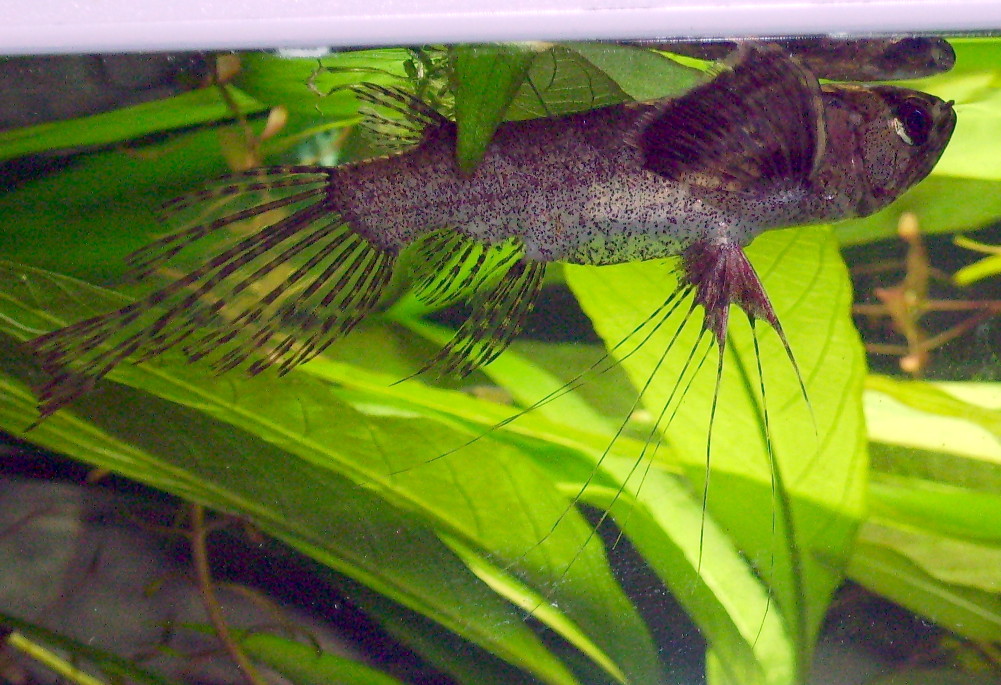
Toniher / CC BY-SA (http://creativecommons.org/licenses/by-sa/3.0/)
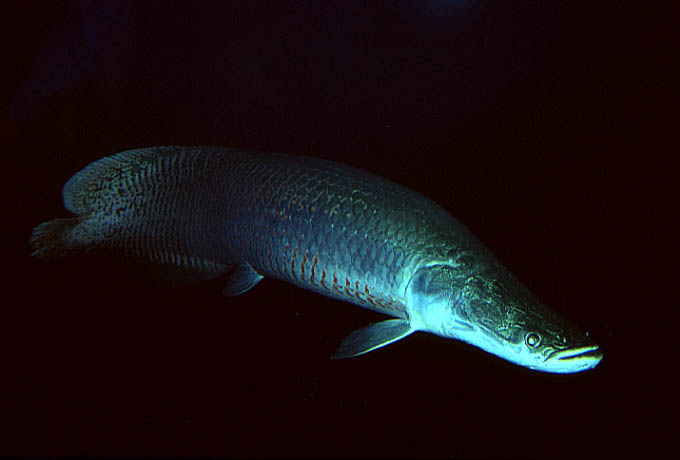
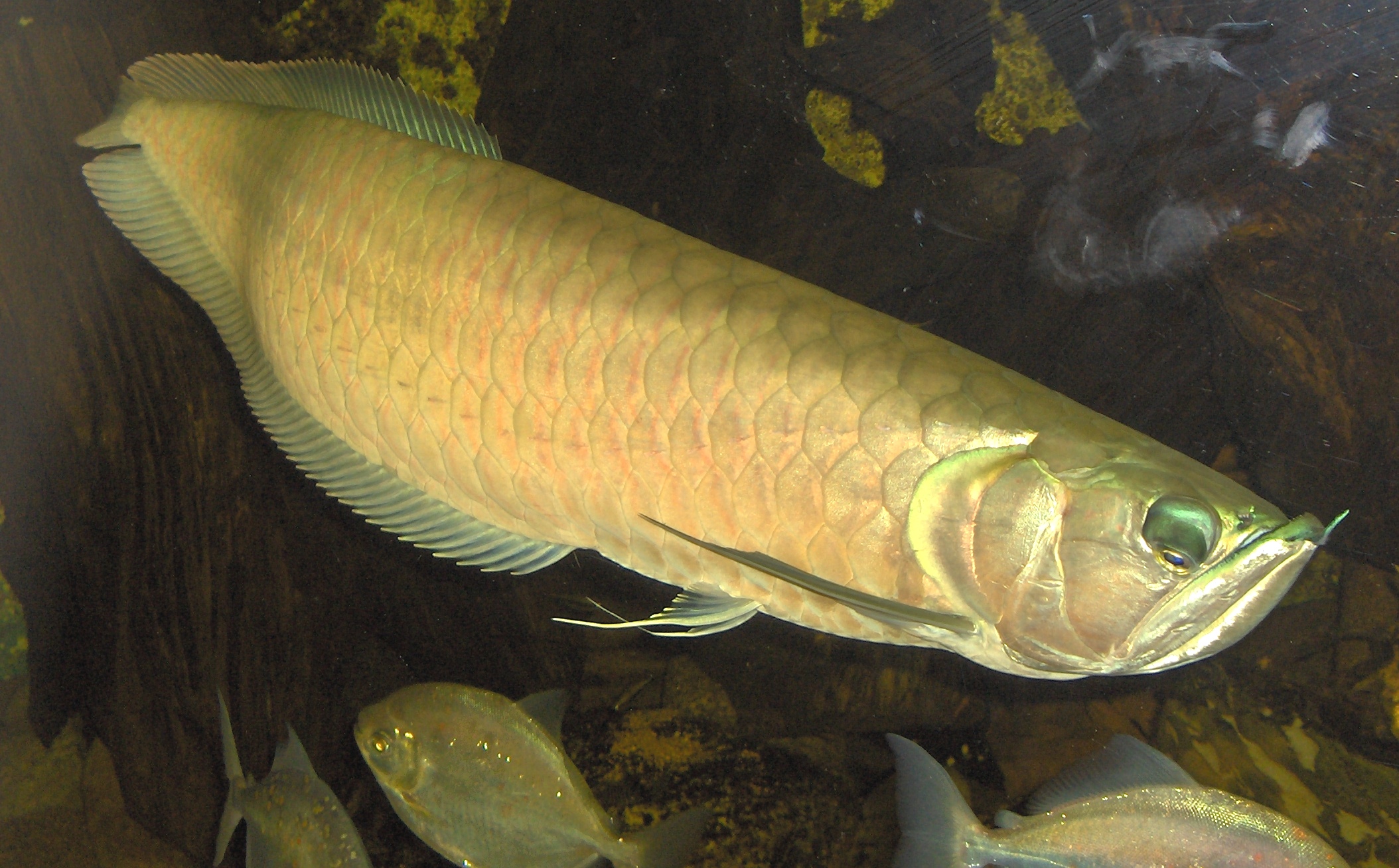
Osteoglossidae: Osteoglossids, Bonytongues
These fishes are considered true bonytongues, having teeth on their maxilla that articulate with teeth on their tongue. These species can use their swim bladders for respiration as well as buoyancy. These fishes can use their swim bladder as an air-breathing organ, coming to the surface to inhale air. Some interesting members include:
- Freshwater Butterflyfish (Pantodon buchholzi): This fish is known to leap from the water for food, and lays eggs that float as a raft on the surface
- Pirarucu (Arapaima gigas): One of the largest freshwater fishes, its young fish cluster around the adult's head, attracted by pheromones and possibly by mucus secreted by the adult to eat as food
- African Arowana (Heterotis niloticus): A spiral-shaped organ produces mucus which mixes with the fish's food and eventually swallowed
- Osteoglossum: Characterized by two sensory barbels on the chin, and a nearly-vertical mouth
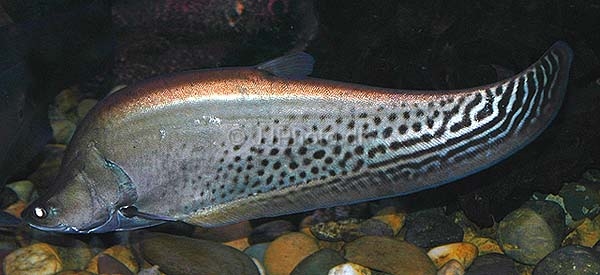
Notopteridae: Featherfin Knifefishes, Old World Knifefishes
The notopterids are interesting because they use their anal fin for propulsion, which runs along most of the ventral side of the body and is fused to the caudal fin. The dorsal fin is reduced, its small structure giving the family the name "featherfins."

Mormyridae: Elephantfishes
The mormyrids have a few unusual features. The name comes from the elongated protrusion jutting from their lower jaw, which looks like an elephant's trunk (although not in the right place). This extension may have taste or touch receptors to search for food in the seafloor. They have air-filled sacs that are completely separate from the swim bladder, located near the inner ear. Mormyrids have an enlarged cerebellum for their size, which they most likely use for processing information garnered from electrial signals. The mormyrids are electrogenic, producing an electrical signal to sense their environment and possibly communicate with other members of the species.
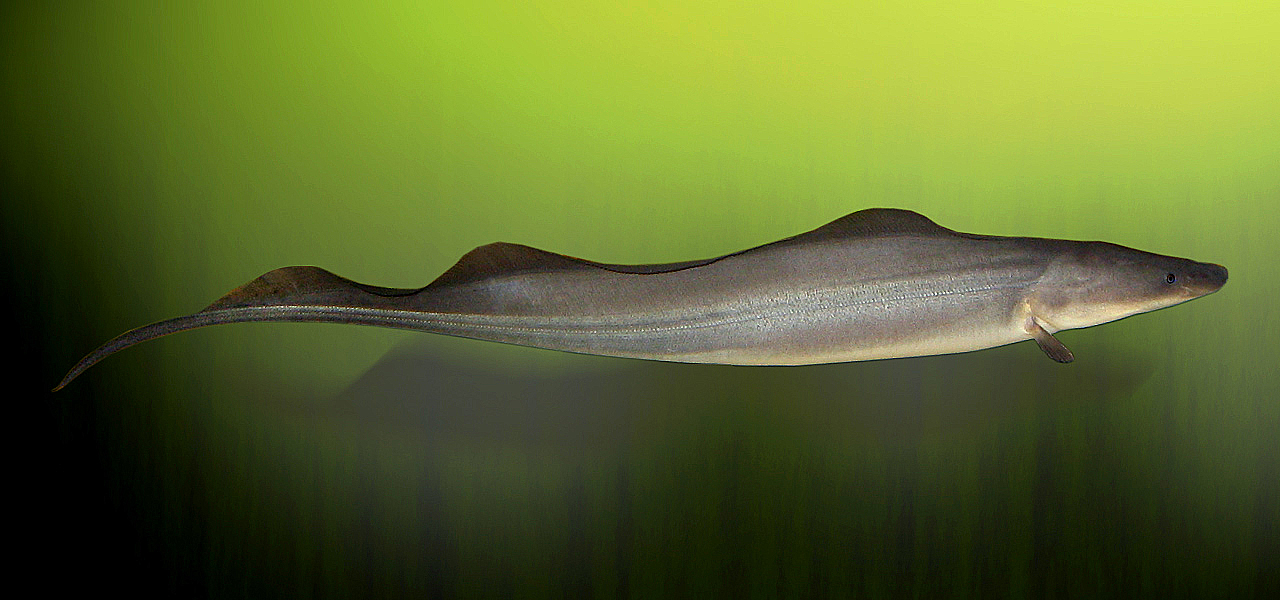
Gymnarchidae: Aba
There is only one species, Gymnarchus niloticus. The Aba has an elongated dorsal fin running along its body, and lacks pelvic, anal, or caudal fins. It can generate an electric field around its body, with its tail being more negatively charged relative to its head. The aba can sense disturbances in this field caused by other fish.